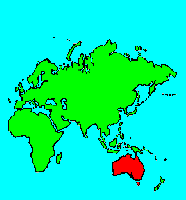SPECIES INFO
Common or Greater Rabbit-Bandicoot or bilby (Peragalea lagotis to Macrotis lagotis) was once very abundant in Australia. It is now found only in scattered populations in western Australia, the Northern Territory and Queensland. Its habitat is dry areas, i.e., shrubby grassland, savannas and woods. They are nocturnal animals and feed primarily on insects and small animals. Males are usually twice as large as the females. Their long silky fur, for which they were hunted, has partially been the reason for their decline. Predators (including foxes) and habitat competition have also contributed to their decline.
Recent evidence suggests this species is now found only in the Northern Territory and Queensland.The bilbies (Family Thylacomyidae) contains only a single genus with two different species.
In most older taxonomies, all the Australian mammals (with the exception of the platypus, echidna, and dingo)were all placed in the marsupial-opossum order. However, the consensus appears that these Australia mammals are a very diverse group, and there should be several different orders involved.
Bandicoots and Bilbies (Order Peramelemorpha) are large rat-like marsupials of Australia, New Guinea, and nearby islands. They feed on insects and plants. Their physical characteristics include tapered snouts and long hind legs.
There are 21 species spread among 8 different genera in this new order.
We have used Wilson and Reeder, Mammal Species of the World, Third Edition, as a guide.
Mammals (Class Mammalia), together with the birds, are among the youngest of the classes of animals. In species count, mammals number about fifty-one hundred, trailing reptiles (approximately fifty-five hundred), fish (approximately eighteen thousand), and birds (approximately eighty-six hundred).
There are three sub-types of mammals:
monotremes, the most primitive:
Develop in reptilian-like eggs and suckle milk emerging
(i.e., spiny anteater, duckbilled platypus)
marsupials
Newborn emerges very underdeveloped and continue to
mature in a pouch on its mother's abdomen (i.e., opossums,
koala, kangaroo)
placental
Embryo develops within the uterus of the female and is
dependent on a placenta for nutrition and waste removal
(i.e., humans, lions, monkeys)
About sixty-five million years ago, the Tertiary era produced thirty-five orders of mammals. Of this number, eighteen have survived to represent Earth's most diversified as well as its most highly developed classification of animals.
Extinction of mammals is fast becoming a serious issue. Duff and Lawson present a list of forty-one extinct species that reached extinction prior to 1800. These forty-one species are not acknowledged in the counts of the various families. Duff and Lawson also present a list of forty-six species including three gazelles, one zebra, one seal, one deer, and one wolf that have probably gone extinct since 1800. These forty-six species are included in the family counts. Science is adding about forty to fifty new species a year to the list. Many of these are the result of divisions of prior species; some are recent discoveries.
Mammals owe their survival to adaptive capabilities that include the ability to exploit whatever sources of food are available to them, as well as their ability to adjust to various climes. Food specialization influenced evolution to such a great extent that the teeth structure can and has been used to provide extensive information on the food needs and various lifestyles of extinct species.
Despite the vast diversity among mammals in terms of size, habitats and adaptations, they share without exception many characteristics such as:
a. body hair
b. mammary glands
c. certain skull characteristics
d. four limbs that permit speed
e. parallel not perpendicular limbs
f. compartmentalized internal organs
g. a four-chambered heart and pulmonary circulation
Backboned Animals (Phylum Chordata) are the most advanced group of animals on earth. These animals are characterized by having a spinal cord or backbone. Most members have a clearly defined brain that controls the organism through a spinal cord. Fish, amphibians, reptiles, birds, and mammals are in this phylum.
Currently, some taxonomists believe that the fish should be divided into two groups (sharks and regular fishes) and that there are some other primitive groups in the phylum such as hagfish or lampreys.
Animal Kingdom contains numerous organisms that feed on other animals or plants. Included in the animal kingdom are the lower marine invertebrates such as sponges and corals, the jointed legged animals such as insects and spiders, and the backboned animals such as fish, amphibians, reptiles, birds, and mammals.



